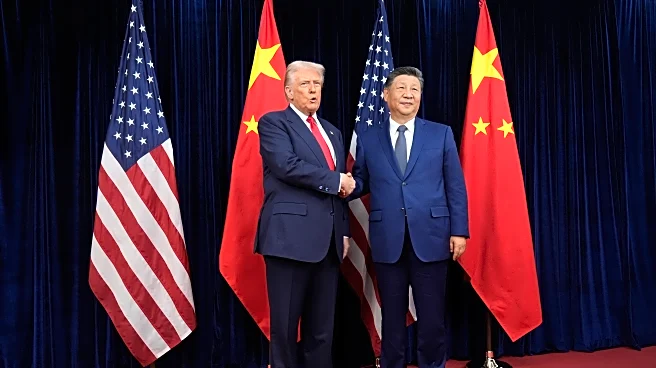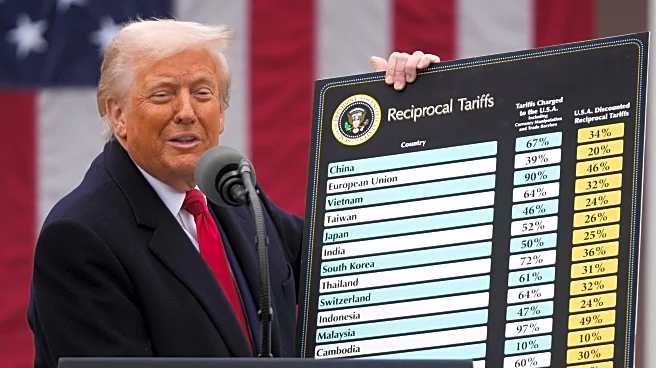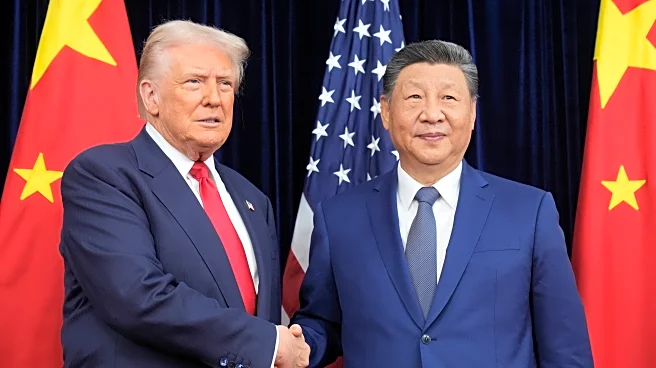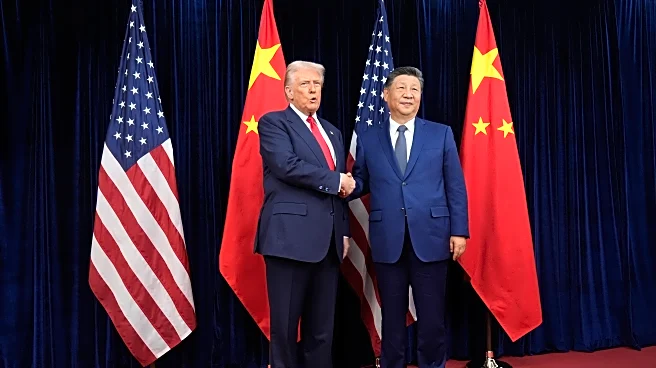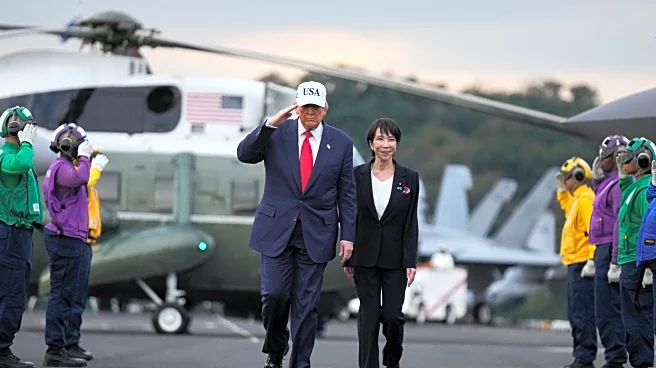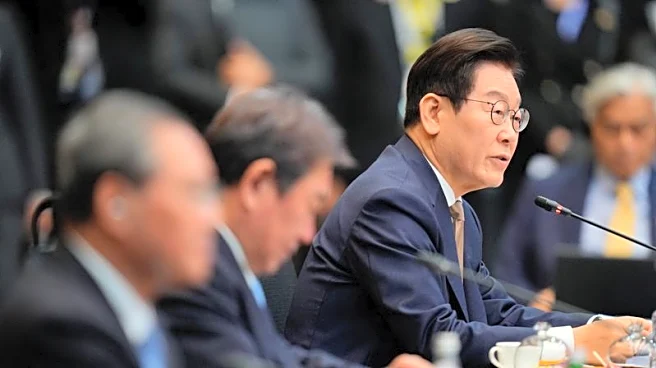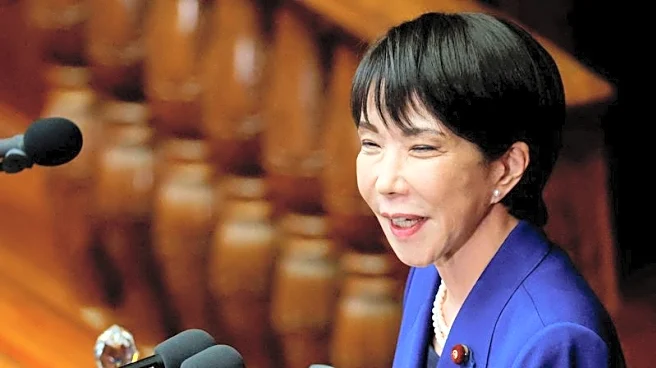What's Happening?
President Trump met with Chinese President Xi Jinping in Busan, South Korea, where they discussed trade relations between the two countries. Following the meeting, President Trump announced a reduction
in tariffs on Chinese goods, lowering the rate from 57% to 47%. This decision comes after China agreed to purchase 25 million metric tons of U.S. soybeans annually for the next three years and to relax export controls on rare earth elements. The meeting, described by Trump as a 'roaring success,' aimed to ease tensions between the world's two largest economies, which have been strained by mutual retaliatory measures. The leaders also discussed potential exports of advanced computer chips to China, with companies like Nvidia expected to engage in talks with Chinese officials.
Why It's Important?
The reduction in tariffs and the agreement on soybean purchases are significant steps towards stabilizing U.S.-China trade relations, which have been volatile due to ongoing disputes. The easing of tensions could benefit U.S. soybean farmers, who have been adversely affected by the trade war, and provide relief to industries reliant on rare earth elements. The meeting underscores the importance of cooperation between the two economic giants, as both countries seek to avoid further escalation that could impact global markets. The potential for increased exports of advanced technology to China also highlights the strategic importance of maintaining a balanced trade relationship.
What's Next?
President Trump plans to visit China in April, while Xi Jinping is expected to visit the U.S. later. Both leaders have expressed a commitment to finalizing agreements that provide 'peace of mind' to their countries and the global community. However, challenges remain, as previous negotiations have seen setbacks. The U.S. and China will need to navigate ongoing issues related to manufacturing dominance, emerging technologies, and geopolitical tensions, including the situation in Ukraine. The upcoming Asia-Pacific Economic Cooperation summit may further influence regional dynamics and trade policies.
Beyond the Headlines
The meeting between President Trump and Xi Jinping highlights the complex interplay of economic and political factors shaping U.S.-China relations. The reduction in tariffs and soybean purchase agreement may alleviate immediate pressures, but underlying tensions related to technology and geopolitical influence persist. The strategic maneuvering by both countries reflects a broader pattern of managing volatility while maintaining competitive advantages. The long-term implications of these developments could influence global trade patterns and technological innovation.


